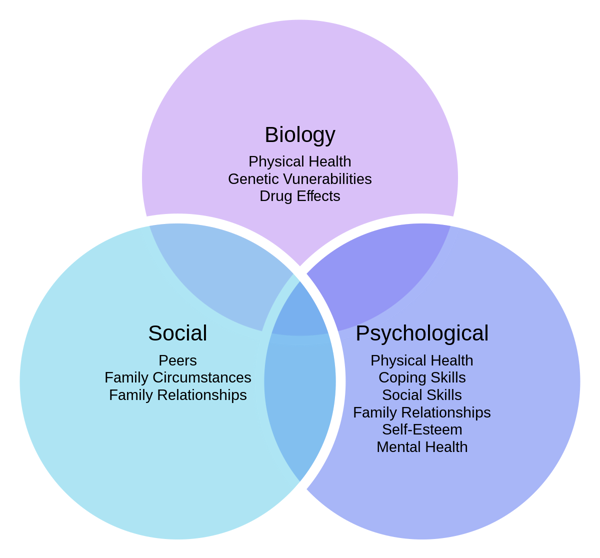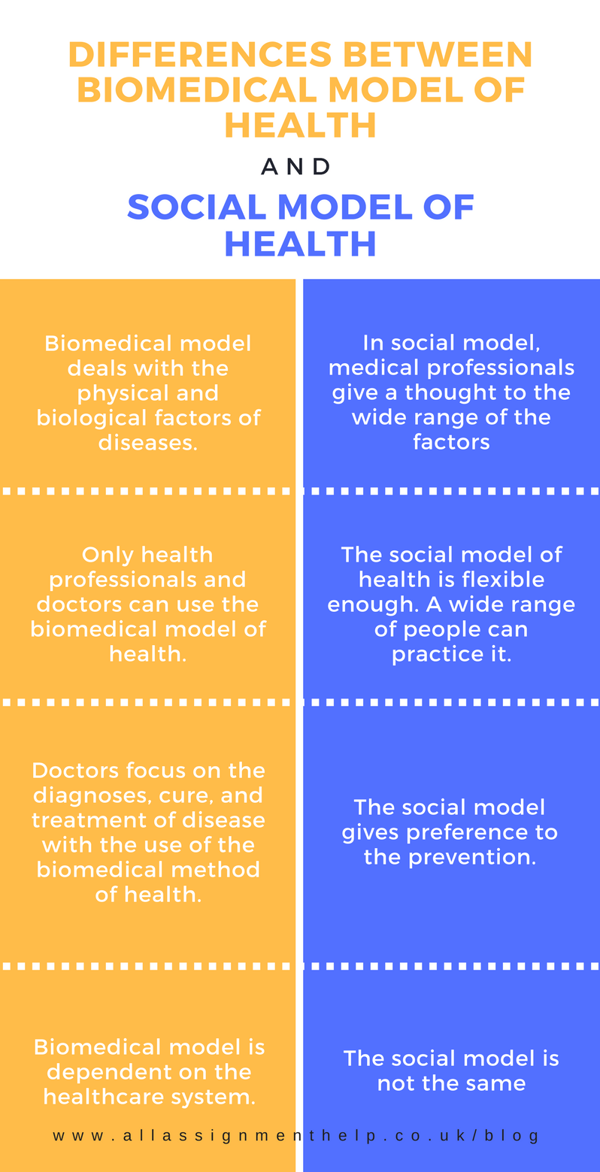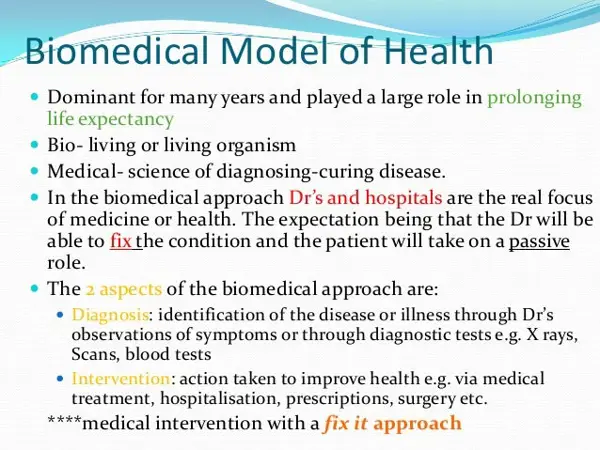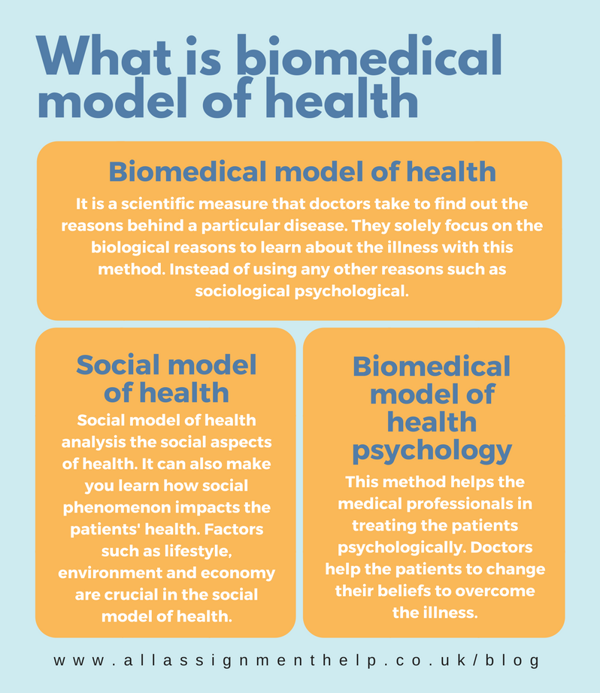Table of Contents
- Introduction
- Defining the Biomedical Model
- Application of the Biomedical Model
- Criticism and Limitations
- Alternatives to the Biomedical Model
- Advantages of the Biomedical Model
- Key Takeaways
Introduction
The Biomedical Model of Health is a fundamental framework used in medical practice and research. This article provides an in-depth exploration of the various aspects of the biomedical model, including its definition, application, criticism, alternatives, and advantages.
Defining the Biomedical Model
The Biomedical Model of Health is a conceptual model that views health and illness as primarily biological in nature. It focuses on the identification and treatment of specific diseases and emphasizes the role of biological factors, such as genetics, pathogens, and physiological abnormalities, in determining health outcomes.
The biomedical model of health is a conceptual framework that views health and illness primarily from a biological perspective. It suggests that physical and physiological factors are the key determinants of a person's overall health. This model is based on the assumption that all diseases and illnesses can be explained and treated through biological causes.
According to the biomedical model, health is defined as the absence of disease or any abnormality in the body. It emphasizes the importance of diagnosing and treating specific symptoms or abnormalities, often using medical interventions such as medications, surgeries, and therapies.
This approach focuses on objective and measurable aspects of health, disregarding other factors that may influence an individual's well-being, such as social, psychological, and environmental determinants. It considers the human body as a machine that can be fixed or maintained through medical interventions.
The biomedical model has played a crucial role in advancing medical knowledge and treating various diseases. It has led to significant discoveries in understanding the biological processes underlying illnesses and developing effective treatments. However, critics argue that its narrow focus on biological factors may overlook important psychosocial and contextual aspects that contribute to health and well-being.
Despite its limitations, the biomedical model remains a dominant approach in contemporary healthcare systems, particularly in diagnosing and treating acute diseases and injuries. It has undoubtedly contributed to extending human life expectancy and improving overall health outcomes.

Application of the Biomedical Model
The biomedical model finds widespread application in clinical practice, medical research, and public health interventions. It serves as the foundation for diagnostic processes, medical interventions, and the development of pharmaceutical treatments. Additionally, the model plays a significant role in the education and training of healthcare professionals.
The biomedical model of health is a dominant framework in healthcare that focuses on the physical aspects of illness and disease. It emphasizes the importance of biological factors in understanding, diagnosing, and treating health conditions.
Key Features of the Biomedical Model:
- Reductionism: The biomedical model breaks down health problems into their smallest components to understand their causes and mechanisms.
- Biological Determinism: It views health and illness as purely biological in nature, largely ignoring the influence of social, psychological, and environmental factors.
- Diagnosis and Treatment: The model places significant importance on diagnosing specific diseases or conditions and finding corresponding treatments or interventions.
Application of the Biomedical Model:
The biomedical model finds widespread application in various healthcare settings:
1. Medical Education:
Medical schools extensively utilize the biomedical model to train future healthcare professionals. It helps them develop a strong foundation in understanding the anatomical, physiological, and pathological aspects of human health.
2. Diagnosis and Treatment:
The biomedical model serves as a basis for medical professionals to diagnose diseases accurately. It enables them to conduct medical tests, interpret results, and prescribe appropriate treatments, medications, or surgical interventions.
3. Biomedical Research:
Scientific research in medicine heavily relies on the biomedical model. It facilitates the investigation of biological mechanisms, studying the efficacy of treatments, and developing new therapeutic interventions.
4. Healthcare Policy and Insurance:
The biomedical model influences healthcare policies and insurance systems as it emphasizes disease-specific treatments. Medical coverage often focuses on biomedical interventions supported by evidence-based medicine.
5. Public Health Interventions:
While the biomedical model primarily focuses on individual health, its principles also apply to population health management. Identifying disease trends, implementing preventive measures, and delivering medical interventions are all driven by the biomedical approach.
Despite its dominant status, the biomedical model has faced criticism for neglecting holistic aspects of health and failing to address social determinants and psychological factors influencing well-being. Nonetheless, it continues to be a foundational framework in medical practice.

Criticism and Limitations
While the biomedical model has greatly advanced medical science, it has also faced criticism for its reductionist approach, limited focus on prevention, and neglect of social and psychological determinants of health. Critics argue that an exclusive reliance on this model may lead to a narrow understanding of health and hinder the adoption of holistic healthcare approaches.
The biomedical model of health is a traditional approach to understanding and treating illness, focusing primarily on the biological factors that contribute to diseases. While it has been widely accepted and utilized in medical practice, there are several criticisms and limitations associated with this model.
Criticism
One major criticism is that the biomedical model tends to oversimplify the complex nature of health and disease. It predominantly focuses on diagnosing and treating physical symptoms, disregarding the impact of psychological, social, and environmental factors on overall health. This narrow perspective often fails to address the underlying causes of illnesses.
Moreover, the biomedical model is criticized for promoting a reactive rather than a proactive approach to healthcare. It mainly concentrates on curing diseases after they have occurred rather than emphasizing preventive measures to avoid the development of illnesses in the first place. This approach may result in higher healthcare costs and reduced quality of life for individuals.
Limitations
One limitation of the biomedical model is its exclusion of subjective experiences and individual perspectives regarding health and well-being. It overlooks the importance of patients' beliefs, values, and cultural contexts, which can significantly influence their understanding and management of health-related issues. This omission can hinder effective patient-doctor communication and personalized care.
Additionally, the biomedical model often fails to address the complex interplay between social determinants of health, such as income, education, and social support, and individual health outcomes. It does not adequately account for the socioeconomic factors that contribute to health disparities among different population groups.
While the biomedical model of health has contributed significantly to medical advancements, it is important to recognize its criticisms and limitations. Integrating a more holistic and patient-centered approach that acknowledges the influence of psychological, social, and environmental factors can lead to improved healthcare outcomes and a more comprehensive understanding of health.

Alternatives to the Biomedical Model
Various alternatives to the biomedical model have emerged over time, including the biopsychosocial model, which acknowledges the interplay between biological, psychological, and social factors in health and illness. Other alternatives emphasize patient-centered care, health promotion, and the importance of addressing social determinants of health to achieve overall well-being.
The biomedical model of health is a traditional approach that focuses primarily on biological factors when it comes to diagnosing and treating illnesses. It views the human body as a machine, where diseases are seen as malfunctions that can be fixed through medical intervention.
However, there are alternative models of health that take into account a broader range of factors influencing well-being. Some of these alternatives include:
Social Determinants of Health
This model recognizes that social, economic, and environmental factors play a crucial role in shaping health outcomes. It emphasizes the impact of social inequalities, such as income, education, housing, and employment, on a person's health. By addressing these social determinants, this model aims to improve overall well-being and reduce health disparities.
Biopsychosocial Model
The biopsychosocial model acknowledges that health is influenced not only by biological factors but also by psychological and social factors. It considers the interplay between physical, mental, and social aspects of a person's life, recognizing the importance of emotional well-being, social support systems, and lifestyle choices in determining health outcomes.
Holistic Health Model
The holistic health model takes a comprehensive approach to health by considering the physical, mental, emotional, and spiritual well-being of an individual. It emphasizes the importance of maintaining balance and harmony between different aspects of one's life. This model encourages a proactive approach to health, promoting practices like meditation, exercise, and healthy eating habits.
While the biomedical model of health remains widely used in medical practice, these alternative models provide a more holistic understanding of health, taking into account various influences that can impact well-being. By considering a wider range of factors, healthcare professionals can provide more comprehensive and personalized care to individuals.

Advantages of the Biomedical Model
Despite its limitations, the biomedical model has numerous advantages. Its focus on evidence-based research, disease-specific interventions, and the ability to rapidly diagnose and treat illnesses has resulted in significant advancements in medical care, improved patient outcomes, and prolonged life expectancy.
The biomedical model of health is an approach to understanding and treating diseases that focuses on biological factors, such as genetics, physiological processes, and pathological changes. This model has several advantages:
- Scientific Basis: The biomedical model is grounded in scientific research and evidence. It relies on rigorous studies, clinical trials, and empirical data to diagnose and treat diseases, providing a strong foundation for healthcare practices.
- Clear Diagnosis: The biomedical model emphasizes the objective diagnosis of diseases through physical examinations, laboratory tests, and imaging techniques. This helps healthcare professionals to accurately identify the nature and extent of an illness.
- Effective Treatments: By focusing on the underlying biological causes of diseases, the biomedical model enables the development of targeted and effective treatments. Medical interventions, such as medications, surgeries, and therapies, are designed to directly address the physiological mechanisms of the illness.
- Improved Health Outcomes: The biomedical model has led to significant advancements in healthcare and contributed to improved health outcomes. By understanding and targeting specific biological factors, many diseases can now be effectively managed, leading to increased longevity and quality of life.
- Public Health Impact: The biomedical model has greatly contributed to the prevention and control of infectious diseases. It has enabled the development of vaccines, antibiotics, and public health interventions, which have significantly reduced the spread and impact of infectious agents.
In conclusion, the biomedical model of health offers several advantages by providing a scientifically-based approach to understanding, diagnosing, and treating diseases. Its focus on biological factors has led to effective treatments, improved health outcomes, and significant advancements in public health.

Key Takeaways
- The Biomedical Model of Health considers health and illness from a primarily biological perspective.
- It is widely used in medical practice, research, and the training of healthcare professionals.
- Although criticized for its reductionist approach, the model has led to significant advancements in medical care.
- Alternatives, such as the biopsychosocial model, emphasize the role of social and psychological factors in health.
Frequently Asked Questions (FAQ)
Q: Can the biomedical model explain all health issues?
A: No, the biomedical model focuses primarily on biological factors and may not fully explain complex health issues influenced by social and psychological factors.
Q: What are some criticisms of the biomedical model?
A: Critics argue that the biomedical model neglects the importance of prevention, social determinants of health, and patient-centered care.
Q: How does the biomedical model contribute to medical advancements?
A: The biomedical model's emphasis on evidence-based research and disease-specific interventions has resulted in significant advancements in medical science and improved patient outcomes.



Recent Comments